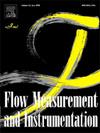Temperature dependence of constant current hot-film sensors: Investigation with application to temperature correction for wall-shear stress measurements
Abstract
Hot-film sensors measure wall-shear stress based on the forced convective heat transfer. Variations of ambient temperatures lead to significant measurement errors for such thermal sensors and must be corrected for sometimes. Although methods for correcting the temperature shifts of hot-film sensors driven in constant temperature or constant voltage mode have been suggested over the years, the temperature dependence and relevant correction schemes of constant current mode of operation are still open questions. In this study, temperature dependence characteristics of constant current hot-film sensors are investigated within relatively large temperature changes in air and water channel flows (28 °C and 16 °C, respectively). The specific property of constant overheat ratios under varying temperatures for constant current driving mode is found and a quite simple temperature correction function is derived on that basis to eliminate the temperature dependence without any assumed heat transfer correlation. With the correction function, the data at different ambient temperatures are collapsed to single curves with high R2 factors over 0.99, typically. Furthermore, after correction, the relative errors of the measured wall-shear stress are reduced to within ±6 % of the true values. It will then enable the constant current hot-film sensors to calibrate at only one ambient temperature instead of a multiple range of temperatures as with many other schemes, which is more practical and convenient.

 求助内容:
求助内容: 应助结果提醒方式:
应助结果提醒方式:


